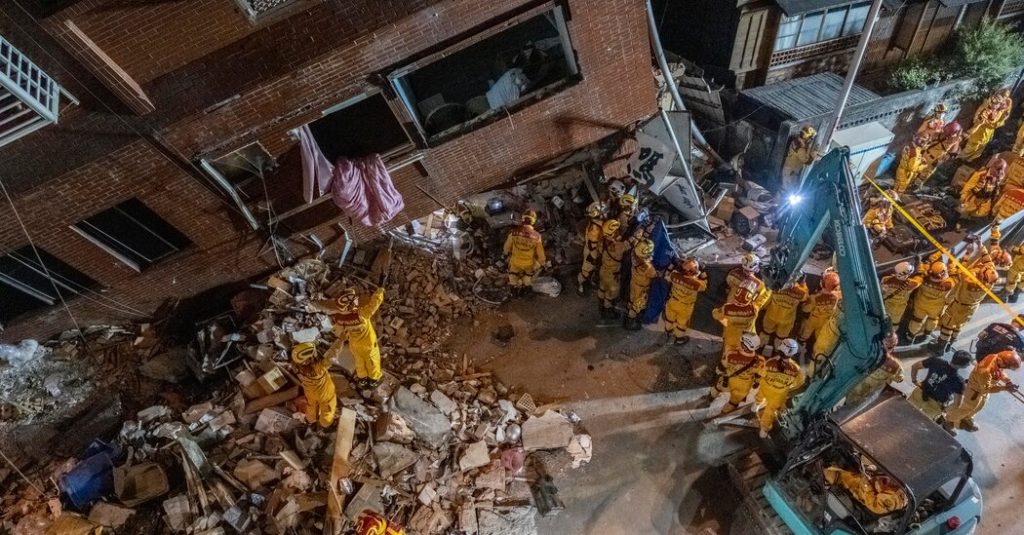The earthquake that struck Taiwan was the largest in half a century, causing buildings in Hualien to sway and rock. Despite over 300 aftershocks, most buildings remained standing, with even the most damaged structures allowing residents to safely escape. This is a testament to Taiwan’s disaster preparedness, with improvements in building codes, public awareness, and trained search-and-rescue operations helping keep the casualty figures relatively low. By Thursday, 10 people had died and over 1,000 were injured, with several dozen still missing.
Rail traffic resumed quickly, roads were being repaired, and hundreds of stranded individuals were rescued near a national park. In Hualien city, workers attempted to prevent the Uranus Building from toppling completely by placing concrete blocks and piling dirt and rocks in front of it. Nearby buildings were inspected for safety, with some residents having to quickly retrieve belongings before evacuation. The prevalence of buildings remaining intact after the earthquake showed the importance of strict building codes and public awareness in Taiwan.
Taiwan’s building codes have included earthquake resistance requirements since 1974, with lessons learned from global disasters like the 1999 Chi-Chi quake prompting further revisions and reinforcement of thousands of buildings. Schools have been retrofitted, and private apartment buildings have been reinforced in recent years to ensure they can withstand seismic activity. Even the tallest skyscrapers in Taiwan are able to endure regular seismic jolts, reflecting the country’s commitment to protecting its infrastructure.
Taiwan’s semiconductor industry, especially the Taiwan Semiconductor Manufacturing Company, relies heavily on factories that must withstand earthquakes. The 1999 quake led TSMC to make structural adjustments and adopt new technologies to protect its facilities. Taiwan’s response to disasters has shown improvement, with rescuers swiftly freeing trapped individuals, and trained volunteers and civil society playing crucial roles in preparedness and response efforts. Lessons learned from past disasters have informed current practices and helped ensure a more effective and systematic approach to disaster prevention.
In Hualien, residents have learned to shelter in safe areas during earthquakes, keep essentials by their beds, and own fire extinguishers. Charities and organizations are providing assistance, with groups offering food, money, counseling, and childcare to those in need. The Tzu Chi Foundation, a Buddhist charity, has provided tents for families to maintain privacy in shelters. Nonprofits have developed a more systematic approach to disaster prevention and response, building on the lessons learned from previous disasters. Taiwan’s resilience in the face of earthquakes is a result of continuous efforts to improve building standards, public awareness, and disaster response capabilities.


